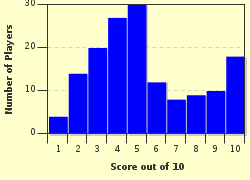Quiz Answer Key and Fun Facts
1. What is the origin of the term "robber baron?"
2. Who was NOT a partner of John D. Rockefeller in the founding of Standard Oil?
3. What Pittsburgh banker and financier served as Secretary of the Treasury under Presidents Harding, Coolidge and Wilson, and was also the U.S. Ambassador to the United Kingdom?
4. Which family member of the John Jacob Astor fortune perished with the sinking of the "RMS Titanic" in 1912?
5. William Randolph Hearst's publishing dynasty began when he purchased a floundering newspaper at a bankruptcy auction in San Francisco, California for $8,500.
6. What Canadian, who immmigrated to St. Paul, Minnesota at the age of 18, began his career as a bookkeeper but created an empire based on coal, steamships, and railroads?
7. What tobacco industrialist died in New York City and left his vast estate to a major university in North Carolina and his only child?
8. What American inventor and chemist developed an inexpensive process for producing aluminum and founded the Pittsburgh Reduction Company in 1886?
9. What Scottish-born American tycoon made a fortune in the steel industry and has a dinosaur, among other things, named after him?
10. What founder of a Colorado coal company had a daughter who eventually formed a liason with John L. Lewis of the United Mineworkers of America(UMWA) and turned the mines into the first unionized coal mines in Colorado?
Source: Author
drushalli
This quiz was reviewed by FunTrivia editor
bloomsby before going online.
Any errors found in FunTrivia content are routinely corrected through our feedback system.

